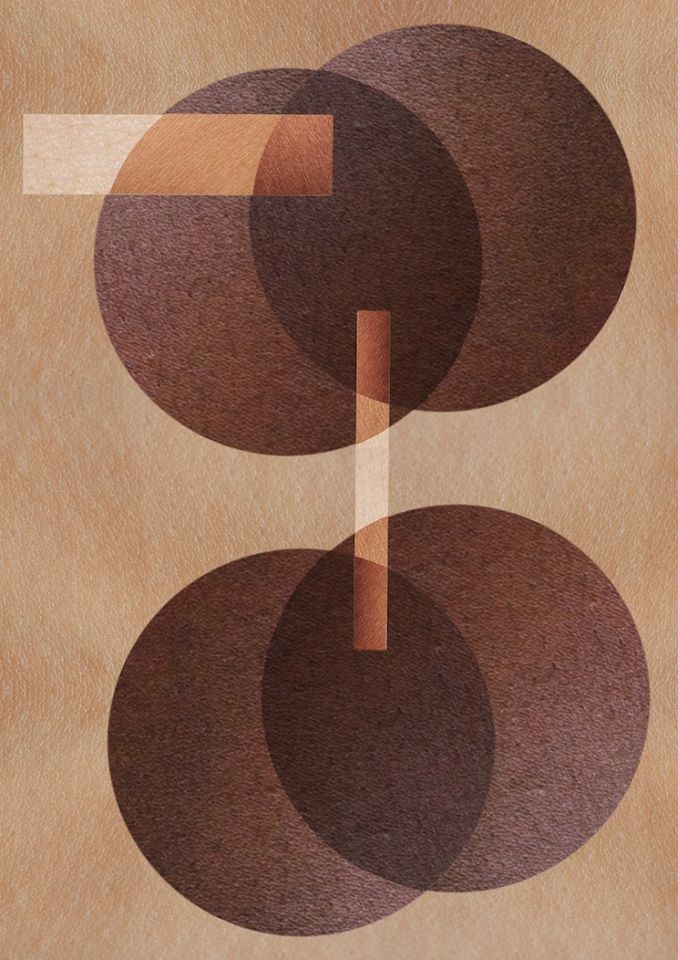Justyna Górowska
Origins
kuratorka: Anna Batko
otwarcie: 30 kwietnia 2020, online, www.theorigins.site
Historia, którą chcemy opowiedzieć, jest o skórze. O skórze w której żyjemy i skórze, która, potrzebuje skóry. O dwóch metrach kwadratowych warstwy, która grzeje, chroni, oddziela. Stanowi granicę między tym co na zewnątrz i wewnątrz, co jest jednocześnie tu i tam, ale też rozsadza kategorię miejsca. Jest jak idealnie skrojony kombinezon, który z czasem naciąga się, marszczy i pęka. Potem już chyba tylko jest, nie ma do czego przylegać.
Ta historia jest też o naskórkowości. Zaczyna się w latach 20. XX wieku albo jeszcze wcześniej, u progu rewolucji. Narodzinom nowego człowieka, postulatom wolności i równości towarzyszyć ma nowa sztuka. Specyficzne związanie estetyki z etyką, rewolucji społecznej z artystyczną. Konstruktywizm prostych środków i przestrzennych funkcji. Nowa sztuka ma kształtować nieburżuazyjne gusta i nasycać ideologią socjalizmu proletariackie masy. Rodzi się w cieniu cywilizacji przemysłowej, w oparach kapitalizmu, systemu, którym od czasu do czasu wstrząsają wybuchy społecznego gniewu. Ta atmosfera pełna podskórnych napięć może być odbiciem współczesności, tarć i rozdźwięków związanych z postępem technologicznym i globalnymi konfliktami wciągającymi w swoją orbitę rasę, płeć i społeczne klasy.
100 lat później nikt nie widzi rewolucyjnego potencjału w abstrakcji. To dekoracja, wypreparowana forma zombie, powłoka odseparowana od wnętrzności i egzystencjonalnych bebechów, która dobrze wygląda na ścianie. Najlepiej w nowomieszczańskim wnętrzu, które bardziej niż mieszkanie przypomina hotel.
W latach 20. XXI wieku niemal każdy aspekt życia ma swój odpowiednik w przestrzeni wirtualnej. Ciało weszło w epokę postwarzy, w której twarz jest tylko strukturą i jako taka może zostać zastąpiona inną część ciała. To skóra znaczy. Sztuczna inteligencja koduje jej kolor, płeć, etniczne i społeczne pochodzenie. Ma to swój aspekt komercyjny – wyznacza target kampanii reklamowych – ale i biopolityczny, związany z kontrolą, egzekwowaniem prawa i inwigilacją. Algorytm, który stoi za oprogramowaniem komputera reprodukuje uprzedzenia, jest rasistowski, homofobiczny i seksistowski, a zbierane prze niego dane zasilają kapitał, nie tylko globalnych korporacji, ale też chińskiego rządu i sztabu wyborczego Trumpa. Nasza widoczność, nawet jeśli pozorna, podporządkowana mikro reżimom, siłą rzeczy legitymizuje struktury tego wykluczenia.
Formalizm zombie wraca. Origins to rodzaj komputerowej gry, której przestrzeń wypełnia skóra i konstruktywistyczna abstrakcja – przykurzona i trącąca myszką forma, którą próbujemy wypełnić ciałem. Wewnątrz niej spaceruje widz-avatar, postać bez płci i rasy, która nakłada maskę i wchodzi w interakcję z obiektami. Jej rzeczywistość nawet jeśli jak wąż zrzuca właśnie skórę, to jej tkanka wciąż jest polem podskórnej i permanentnej wojny. Zmienia się skóra świata, pisze Tadeusz Peiper, ale nie świat, i nie uprzedzenia skrzętnie ukryte pod płaszczykiem politycznej poprawności i neoliberalnego ładu. Origins wskrzesza utopię i wyciąga trupy z szafy. Ale też przygląda się skórze, która wciąż powleka się nowym. I tropi jej unerwienia. Mikroskopijne korytarze dokądś. Avatar jest i nie ma go w tej przestrzeni, która każdym gruczołem ciała krzyczy: dotknij mnie.
***
Wystawa na warsztat bierze historię polskiego konstruktywizmu, w tym zapomnianą twórczość Henryka Wicińskiego i jego nigdy niezrealizowane projekty teatralne. Punktem wyjścia jest wizjonerski projekt konstruktywistycznej sceny, ale też kostiumy sprowadzające abstrakcje do „zmysłowych struktur wzroku”, zaprojektowane na potrzeby spektaklu „Trójkąt i koło” w eksperymentalnym Teatrze Cricot. Dla awangardowego rewolucjonisty scenografia miała działać jak abstrakcyjny obraz – organiczna machina budowana za pomocą prostych figur geometrycznych i wyabstrahowanych plam światła. Aktor był częścią tej maszynerii, marionetką, której ciało zapada się w agresywnej materii, prowadząc spojrzenie widza do wnętrza. Wicińskiemu zależało na uwolnieniu emocji, psychosomatycznym czuciu i zapętlającym się odczuciu podmiotowości. Prezentowane kolaże powstały na podstawie skanów twarzy zaproszonych do projektu osób – ich skóry o różnych odcieniach i pigmentacji, która stała się materią abstrakcyjnej kompozycji, nie tylko historycznym frankensteinem, ale też kolektywnym ciałem. Innymi słowy ciałem, które zachowując indywidualność ciał z których powstało, dzięki konstruktywistycznej formie, działa jak jedna skóra i staje się medium społecznej polifonii. Wybraną abstrakcję można nakładać na twarz w formie cyfrowej maski, która uniemożliwia rozpoznanie etniczności, a co za tym idzie pozwala na manipulowanie algorytmem. To ciało nałożone na inne ciało staje się tym samym subwersywną wyrwą w wirtualnym systemie, na który wszyscy jesteśmy skazani. Dziś bardziej niż zwykle.
*** Zapraszamy na stronę www.theorigins.site
Informacje techniczne: Ładowanie strony zależy od szybkości łącza internetowego, wersji przeglądarki (preferowane zaktualizowane wersje Mozilla Firefox i Chrome) oraz od urządzenia, na którym jest wyświetlana. Może ono potrwać od 15 sekund do kilku minut.
Po przestrzeni należy poruszać się za pomocą strzałek na klawiaturze i myszki, która steruje ruchami głowy. Aby poruszać się szybciej należy użyć strzałki i przycisku Shift.
Jeżeli chcesz zatrzeć swoją etniczność i oszukać komputerowy algorytm reprodukujący uprzedzenia załóż maskę: https://bit.ly/35i9cHa
Miłego zwiedzania!
~
Justyna Górowska
Origins
curator: Anna Batko
opening: 30 April 2020, online, www.theorigins.site
The story we want to tell is about skin. About the skin we live in and the skin that needs skin. About the two square metres of a layer that warms, protects and separates us. It marks the border between the inside and the outside, which is here and there at the same time, while it also dismantles the category of place. It is like a perfectly tailored uniform which stretches, creases and rips with time. Afterwards, it probably only just exists, having nothing to cling to.
This story is also about the epidermal. It begins in the 1920s or even earlier, on the threshold of revolution. The birth of a new man, the postulates of freedom and equality are to be accompanied by a new art. A specific nexus between aesthetics and ethics, between social and artistic revolution. Constructivism of simple means and spatial functions. New art is meant to shape non-bourgeois tastes and saturate proletarian masses with socialist ideology. It is born in the shadow of industrial civilisation, in the fumes of capitalism, a system shaken from time to time by outbursts of social wrath. Brimming with subcutaneous tensions, this atmosphere may reflect the modern-day era, the clashes and dissonances related to technological progress and global conflicts that involve race, gender and social class.
One hundred years later, nobody discerns a revolutionary potential in abstraction. It is a decoration, a processed zombie form, an outer layer separated from entrails and existential guts, which looks good on a wall. It looks best in a nouveau-bourgeois interior that resembles a hotel rather than an apartment.
In the 2020s, almost every aspect of social life finds its counterpart in virtual space. The body has entered the post-face era, in which face is merely a structure and, as such, it can be replaced with a different body part. It is the skin that has meaning. Artificial intelligence codes its colour, gender, ethnic and social origins. This has a commercial aspect – it sets the target of advertising campaigns, but also a biopolitical aspect related to control, law enforcement and invigilation. The algorithm behind computer software reproduces prejudices; it is racist, homophobic and sexist, and the data it collects feeds capital – not only that of global corporations, but also of the Chinese government and Trump’s election staff. Subordinated to micro-regimes, our visibility, even if only seeming, inevitably legitimises the structures of this exclusion.
Zombie formalism is making a comeback. Origins is something of a computer game whose space is filled with skin and Constructivist abstraction – a dusty and antiquated form which we seek to fill with the body. The viewer-avatar is strolling inside it, a figure with no gender or race, who dons a mask and interacts with objects. Even if their reality is currently shedding skin like a snake, its tissue remains a field of underlying, permanent war. The world’s skin is changing, writes Tadeusz Peiper, but not the world itself and not the prejudices diligently kept under the wraps of political correctness and neoliberal order. Origins resurrects utopia and drags skeletons out of the closet. But it also examines the skin, which constantly coats itself with new layers. And it traces its innervations. Microscopic corridors that lead somewhere. The avatar is and is not in this space, which screams with every gland of the body: touch me!
***
The exhibition addresses the history of Polish Constructivism, including the forgotten oeuvre of Henryk Wiciński and his theatrical projects that never came about. The starting point is the visionary design of a Constructivist stage, but also the costumes that reduce abstraction to “sensual structures of the sight”, designed for the spectacle Triangle and Circle at the experimental Cricot Theatre. For the avant-garde revolutionary, the stage design was meant to work like an abstract painting – and organic machine built with simple geometric shapes and abstracted patches of light. The actor formed part of that machinery, a marionette whose body collapsed in aggressive matter, leading the viewer’s gaze to the interior. What Wiciński sought was the liberation of emotions, psychosomatic feeling and looped sense of subjectivity. The presented collages are based on scans of faces of invited project participants – their skin of various shades and pigmentation, which became the material of an abstract composition, not only a historical Frankenstein, but also a collective body. In other words, it is a body whose Constructivist form allows it to function like a single skin and become a medium of social polyphony, while preserving at the same time the individuality of the bodies that build it. A chosen abstraction can be superimposed on the face in the form of a digital mask, which makes it impossible to recognise ethnicity, and therefore allows for manipulating the algorithm. The body superimposed on another body thus becomes a subversive gap in the virtual system to which we are all condemned. To a greater extent today than it is usually the case.
***Opening of the website www.theorigins.site
Technical information: Loading of the site depends on the speed of your internet connection, on browser version (preferably updated Mozilla Firefox and Chrome) and on the device on which it is displayed. It may take from 15 seconds to several minutes.
Move around the space with the arrow keys and the mouse that controls the movements of the head. To move faster use the arrow key and Shift button.
If you want to blur your ethnicity and the cheat the computer algorithm reproducing prejudices, put the mask on: https://bit.ly/35i9cHa
Enjoy!
Projekt finansuje m.st. Warszawa |
The project is financed by the Capital City of Warsaw



